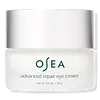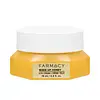What's inside
What's inside
 Key Ingredients
Key Ingredients

 Benefits
Benefits

 Concerns
Concerns

 Ingredients Side-by-side
Ingredients Side-by-side

Water
Skin ConditioningButyrospermum Parkii Butter
Skin ConditioningGlycerin
HumectantCoco-Caprylate/Caprate
EmollientCaprylic/Capric Triglyceride
MaskingCetearyl Olivate
Propanediol
SolventSqualane
EmollientSorbitan Olivate
EmulsifyingCetearyl Alcohol
EmollientMacadamia Ternifolia Seed Oil
EmollientDipalmitoyl Hydroxyproline
Skin ConditioningBehenyl Alcohol
EmollientCarthamus Tinctorius Seed Oil
MaskingMyristyl Myristate
EmollientChlorella Vulgaris Extract
Skin ConditioningFucus Vesiculosus Extract
EmollientOryza Sativa Bran Extract
Skin ConditioningRosmarinus Officinalis Leaf Extract
AntimicrobialHelianthus Annuus Extract
EmollientGluconolactone
Skin ConditioningSodium Chloride
MaskingGlyceryl Caprylate
EmollientBacillus Ferment
Skin ConditioningFructose
HumectantAesculus Hippocastanum Extract
AntioxidantCaffeine
Skin ConditioningTocopherol
AntioxidantXanthan Gum
EmulsifyingCaprylhydroxamic Acid
1,2-Hexanediol
Skin ConditioningTrisodium Ethylenediamine Disuccinate
Citric Acid
BufferingSodium Benzoate
MaskingPotassium Sorbate
PreservativeWater, Butyrospermum Parkii Butter, Glycerin, Coco-Caprylate/Caprate, Caprylic/Capric Triglyceride, Cetearyl Olivate, Propanediol, Squalane, Sorbitan Olivate, Cetearyl Alcohol, Macadamia Ternifolia Seed Oil, Dipalmitoyl Hydroxyproline, Behenyl Alcohol, Carthamus Tinctorius Seed Oil, Myristyl Myristate, Chlorella Vulgaris Extract, Fucus Vesiculosus Extract, Oryza Sativa Bran Extract, Rosmarinus Officinalis Leaf Extract, Helianthus Annuus Extract, Gluconolactone, Sodium Chloride, Glyceryl Caprylate, Bacillus Ferment, Fructose, Aesculus Hippocastanum Extract, Caffeine, Tocopherol, Xanthan Gum, Caprylhydroxamic Acid, 1,2-Hexanediol, Trisodium Ethylenediamine Disuccinate, Citric Acid, Sodium Benzoate, Potassium Sorbate
Water
Skin ConditioningGlycerin
HumectantCoco-Caprylate/Caprate
EmollientPentaerythrityl Tetraisostearate
EmollientDiisostearyl Malate
EmollientButyrospermum Parkii Butter
Skin ConditioningCetearyl Alcohol
EmollientTetrahexyldecyl Ascorbate
AntioxidantCetearyl Olivate
Pentylene Glycol
Skin ConditioningHelianthus Annuus Seed Oil Unsaponifiables
EmollientSorbitan Olivate
EmulsifyingBoron Nitride
AbsorbentCaffeine
Skin ConditioningHyaluronic Acid
HumectantCeramide NP
Skin ConditioningVaccinium Macrocarpon Fruit Extract
AstringentCoffea Arabica Seed Extract
MaskingHoney Extract
HumectantPropolis Extract
Skin ConditioningRoyal Jelly Extract
Skin ConditioningCitrus Aurantium Amara Fruit Extract
Skin ConditioningCitrus Aurantium Sinensis Peel Extract
Skin ConditioningCitrus Reticulata Fruit Extract
Skin ProtectingAscorbic Acid
AntioxidantTridecapeptide-1
Skin ConditioningBetaine
HumectantTriolein
Skin ConditioningHydroxyacetophenone
AntioxidantTocopheryl Acetate
AntioxidantAstaxanthin
Skin ConditioningAllantoin
Skin ConditioningHippophae Rhamnoides Oil
EmollientTocopherol
AntioxidantUbiquinone
AntioxidantLecithin
EmollientHaematococcus Pluvialis Extract
AntioxidantGlyceryl Dioleate
EmollientWater, Glycerin, Coco-Caprylate/Caprate, Pentaerythrityl Tetraisostearate, Diisostearyl Malate, Butyrospermum Parkii Butter, Cetearyl Alcohol, Tetrahexyldecyl Ascorbate, Cetearyl Olivate, Pentylene Glycol, Helianthus Annuus Seed Oil Unsaponifiables, Sorbitan Olivate, Boron Nitride, Caffeine, Hyaluronic Acid, Ceramide NP, Vaccinium Macrocarpon Fruit Extract, Coffea Arabica Seed Extract, Honey Extract, Propolis Extract, Royal Jelly Extract, Citrus Aurantium Amara Fruit Extract, Citrus Aurantium Sinensis Peel Extract, Citrus Reticulata Fruit Extract, Ascorbic Acid, Tridecapeptide-1, Betaine, Triolein, Hydroxyacetophenone, Tocopheryl Acetate, Astaxanthin, Allantoin, Hippophae Rhamnoides Oil, Tocopherol, Ubiquinone, Lecithin, Haematococcus Pluvialis Extract, Glyceryl Dioleate
 Reviews
Reviews

Ingredients Explained
These ingredients are found in both products.
Ingredients higher up in an ingredient list are typically present in a larger amount.
This ingredient is also known as shea butter. It is an effective skin hydrator and emollient.
Emollients help soothe and soften your skin. It does this by creating a protective film on your skin. This barrier helps trap moisture and keeps your skin hydrated. Emollients may be effective at treating dry or itchy skin.
Shea butter is rich in antioxidants. Antioxidants help fight free-radicals, or molecules that may harm the body. It is also full of fatty acids including stearic acid and linoleic acid. These acids help replenish the skin and keep skin moisturized.
While Shea Butter has an SPF rating of about 3-4, it is not a sunscreen replacement.
Shea butter may not be fungal acne safe. We recommend speaking with a professional if you have any concerns.
Learn more about Butyrospermum Parkii ButterCaffeine is most associated with coffee, tea, and cacao. In skincare, it helps with calming inflammation and is rich in antioxidants.
While caffeine is used to treat cellulite and and dark circles, further studies are needed to prove this. It has been believed to help with these skin conditions due to its ability to dilate blood vessels and increase blood flow.
Some studies are looking into caffeine's ability to protect against UV rays.
Learn more about CaffeineCetearyl alcohol is a mixture of two fatty alcohols: cetyl alcohol and stearyl alcohol. It is mainly used as an emulsifier. Emulsifiers help prevent the separation of oils and products. Due to its composition, it can also be used to thicken a product or help create foam.
Cetearyl alcohol is an emollient. Emollients help soothe and hydrate the skin by trapping moisture.
Studies show Cetearyl alcohol is non-toxic and non-irritating. The FDA allows products labeled "alcohol-free" to have fatty alcohols.
This ingredient is usually derived from plant oils such as palm, vegetable, or coconut oils. There is debate on whether this ingredient will cause acne.
Due to the fatty acid base, this ingredient may not be Malassezia folliculitis safe.
Learn more about Cetearyl AlcoholCetearyl Olivate is an emulsifier and texture enhancer. It is derived from the fatty acids of olive oil and Cetearyl alcohol, and is biodegradable.
As an emulsifier, it is used to prevent oils and waters from separating. It can also
Manufacturers use the name Olivem 1000. This ingredient has been found to preserve the natural microbiome of skin. Having a healthy microbiome helps keep our skin healthy and protects against harmful bacteria. This ingredient is grouped with Sorbitan Olivate under the name Olivem 1000.
Learn more about Cetearyl OlivateCoco-Caprylate/Caprate is created from fatty coconut alcohol, caprylic acid, and capric acid.
It is a lightweight emollient. Emollients create a thin barrier on the skin to trap moisture in. This helps keep your skin hydrated and soft.
Once applied, Coco-Caprylate/Caprate is absorbed quickly and leaves a silky feel.
Coco-Caprylate/Caprate may not be fungal acne safe.
Learn more about Coco-Caprylate/CaprateGlycerin is already naturally found in your skin. It helps moisturize and protect your skin.
A study from 2016 found glycerin to be more effective as a humectant than AHAs and hyaluronic acid.
As a humectant, it helps the skin stay hydrated by pulling moisture to your skin. The low molecular weight of glycerin allows it to pull moisture into the deeper layers of your skin.
Hydrated skin improves your skin barrier; Your skin barrier helps protect against irritants and bacteria.
Glycerin has also been found to have antimicrobial and antiviral properties. Due to these properties, glycerin is often used in wound and burn treatments.
In cosmetics, glycerin is usually derived from plants such as soybean or palm. However, it can also be sourced from animals, such as tallow or animal fat.
This ingredient is organic, colorless, odorless, and non-toxic.
Glycerin is the name for this ingredient in American English. British English uses Glycerol/Glycerine.
Learn more about GlycerinSorbitan Olivate is created from the fatty acids in olive oil and sorbitol.
This ingredient is an oil in water emulsifier. It helps stabilize a product by preventing oils and waters from separating. Sorbitan Olivate also helps hydrate the skin.
Manufacturers sell sorbitan olivate under the name OliveM 1000. OliveM 1000 a multifunctional ingredient. It is self-emulsifying. According to a manufacturer, OliveM 1000 does not disrupt natural skin biome.
Due to its olive oil base, this ingredient may not be fungal-acne safe.
Learn more about Sorbitan OlivateTocopherol (also known as Vitamin E) is a common antioxidant used to help protect the skin from free-radicals and strengthen the skin barrier. It's also fat soluble - this means our skin is great at absorbing it.
Vitamin E also helps keep your natural skin lipids healthy. Your lipid skin barrier naturally consists of lipids, ceramides, and fatty acids. Vitamin E offers extra protection for your skin’s lipid barrier, keeping your skin healthy and nourished.
Another benefit is a bit of UV protection. Vitamin E helps reduce the damage caused by UVB rays. (It should not replace your sunscreen). Combining it with Vitamin C can decrease sunburned cells and hyperpigmentation after UV exposure.
You might have noticed Vitamin E + C often paired together. This is because it is great at stabilizing Vitamin C. Using the two together helps increase the effectiveness of both ingredients.
There are often claims that Vitamin E can reduce/prevent scarring, but these claims haven't been confirmed by scientific research.
Learn more about TocopherolWater. It's the most common cosmetic ingredient of all. You'll usually see it at the top of ingredient lists, meaning that it makes up the largest part of the product.
So why is it so popular? Water most often acts as a solvent - this means that it helps dissolve other ingredients into the formulation.
You'll also recognize water as that liquid we all need to stay alive. If you see this, drink a glass of water. Stay hydrated!
Learn more about Water